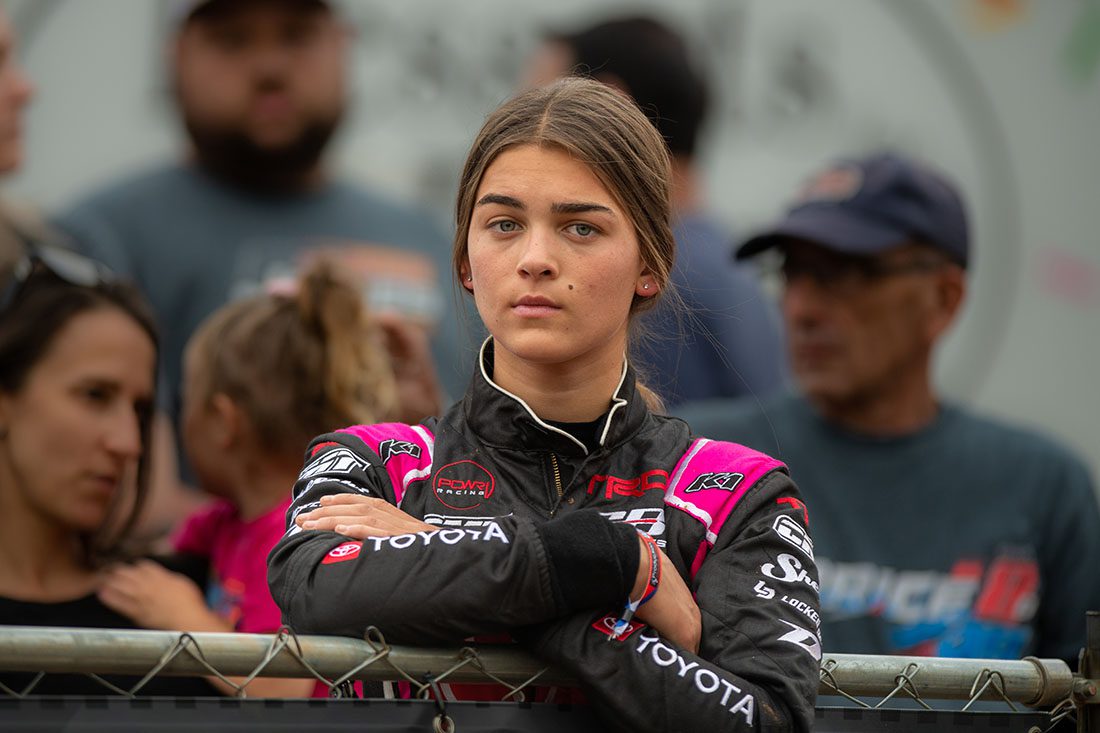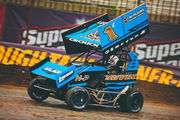
Imago
via sltracing.com

Imago
via sltracing.com
A new chapter in racing’s next generation is quietly unfolding. Shawna Robinson, in the last ’80s, became the first woman to win a NASCAR touring series race after growing up in dirt and pavement competitive racing. Hailie Deegan later grabbed headlines in 2019 with a last-lap dirt track pass at the Las Vegas Bullring, the first female ARCA-sanctioned winner in three decades. Most recently, Gracie Trotter shattered norms by becoming the first local legend and late model before catching fire on dirt ovals. And now enters 18-year-old Jade Avedisian, following that same path with her dirt foundation and ambition to reach NASCAR’s peak.
Watch What’s Trending Now!
In 2025, Avedisian’s momentum only grows stronger. After dominating dirt midgets, the turning point came in 2020, when a then-13-year-old Avedisian shocked the field by winning the $20,000 John Hinck Championship winged Outlaw micro sprint race in Missouri, with only her second start in that class. Now, she is expanding her focus to asphalt stock cars. At New Smyrna’s World Series of Asphalt Pro Late Model races in 2024, the 17-year-old Toyota prospect had steadily climbed the leaderboard with top threes and consistent finishes. Now, she is turning heads as a legendary team hands her the chance of a lifetime, shaping up for a breakout year in mixed disciplines.
ADVERTISEMENT
Rising star seizes a rare shot with one of NASCAR’s most storied teams.
This summer, Jade Avedisian officially stepped into the stock-car path with a multi-race ARCA Menards Series agreement announced in July 2025 with Venturini Motorsports. Under the deal, she will debut in the #25 Toyota Camry at the iconic DuQuoin State Fairgrounds dirt track in August, before returning for an ARCA West event at The Bullring at Las Vegas Motorsports Speedway in October. Mobil 1 and Yahoo come aboard as primary sponsors for those events, and Venturini team owner Billy Venturini praised her as “a phenomenal talent with an impressive resume and a bright future.” Avedisian herself acknowledged the milestone, saying, “Getting this chance to do it with Venturini Motorsports and Toyota is surreal,” adding that she will focus race by race while learning how to adapt from open-wheel dirt machines to heavy stock cars.
At the 2025 CARS Tour, driving the #24 Toyota for Wilson Motorsports, Avedisian had battled through the field and exchanged heavy laps with Tristan McKee before being elevated to the in, thanks to a weight infraction on T.J. DeCaire’s car. In her post-race remarks, the rising star reflected, “It’s cool. I want it to the the first of many hopefully… Outside of that, all I care about is winning races. I just want to win races and do the best I can.” Her performance in that race also came on the back of strong early-season form in the World Series of Asphalt, with multiple podiums and consistent top finishes, underscoring the start of a full-time PLM campaign in 2025. But this wasn’t an easy climb.
Back in 2023, during an interview with Jeff Gluck, she recalled one of the defining moments of her young dirt-racing journey. When she was just 4, her father Ryan bought a quarter midget on a whim, thinking it would be a fun father-daughter hobby. The car sat untouched for nearly two years until Jade decided to try it out, first in church parking lots, then in real competition. Almost immediately, she began winning races, rapidly moving up the ladder. The 202 victory caught the attention of major midget team owner Chad Boat, setting in motion her move to North Carolina to chase bigger opportunities with Keith Kunz Motorsports. KKM’s co-owner Pete Willoughby, known for spotting elite talent, said in 2023, “I believe in a couple of years you’ll be talking about her.”
ADVERTISEMENT
NEWS: Venturini Motorsports Signs Toyota Development Driver Jade Avedisian to Multi-Race ARCA Menards Series Agreement #TeamToyota
Full Release ➡️ https://t.co/YTKqfXHzV1 pic.twitter.com/2m5YLKIgOT
— VenturiniMotorsports (@VenturiniMotor) July 29, 2025
By that time, Avedisian had already made history as the winningest female driver in national midget racing, with seven career wins. She had led the Xtreme Outlaw championship and even impressed top names like Kyle Larson and Christopher Bell. “She’s only 16? That’s crazy,” Bell remarked. “The sky is the limit for Jade.” Larson, her childhood racing hero, added, “You wouldn’t look at her and think she’s a gasser… but she hammers it.” Larson also noted her “better understanding of patience and race craft” than many others her age, an attribute he said couldn’t be taught. For Avedisian, those words carried weight. Growing up in California’s Central Valley, she had watched Larson rise from dirt tracks to NASCAR dominance, and she knew the path ahead would be long, demanding, and uncertain.
ADVERTISEMENT
But breaking into NASCAR is her ultimate goal, which will take more than dirt-track dominance. The next big step is transitioning to asphalt racing, something she has little experience in. While Toyota Racing Development, her current backer, indicated in 2023 that “there are no current plans for pavement, but it is something we will be exploring in the future,” the pressure now is clear. Without family wealth to bankroll her career, Avedisian must rely solely on her talent. “There will be lots of ups and downs trying to make it,” she said. “If I ever do get an opportunity, I can only imagine how cool it will be.” Now, with the opportunity at hand, she has the time to make the most out of it.
Top Stories
Greg Biffle’s $4M Worth Prized Possession Still Without a Buyer Leaves NASCAR Fans Heartbroken

Denny Hamlin Offers First Words Since Losing Beloved Father in Anniversary Fire

Fox Broadcaster Pens Heartfelt Message as Veteran Announcer Quits NASCAR

NASCAR World Mourns as Former Watkins Glen President Michael Printup Passes Away at 60

“This Is Not Racing”: Growing Outrage Erupts Over How Kids Are Being Taught to Win at Any Cost in Modern Motorsports

Christopher Bell’s bold take on NASCAR’s dirt future
Bell’s journey to the NASCAR Cup Series also began on dirt, so it’s no surprise he has strong feelings about its place in the sport. Reflecting on NASCAR’s three-year Bristol dirt experiment, Bell argued that one-off dirt races weren’t enough to make teams invest in the discipline. “So, you know, I think you have to go either all in and have two or three of them or stay out of it,” he stated, likening the situation to how road course racing was once dismissed until multiple events forced drivers to adapt.
ADVERTISEMENT
He recalled the mixed results of the Bristol Dirt era, openly admitting the first attempt was far from ideal. In the first year of 2021, the track was not prepared properly. We ended up racing it in the middle of the day. It was blowing dust, none of the drivers could see, the fans got filthy, and it was a disaster,” he said. But after improvements, including moving the race to night in 2023, Bell went on to win. “2023 was probably the best one that we had. The track was beautiful, and we saw another amazing race,” Bell added.
For Bell, the future of NASCAR dirt racing lies not in converting existing ovals but in taking the Cup Series to purpose-built dirt tracks steeped in history. “Certainly, Eldora would deserve a date. Knoxville, there’s, you know, tracks in Pennsylvania, there’s tracks in California. There are places that they could go all over the country that would be fantastic venues,” he suggested, a vision that could bring NASCAR closer to its roots while delivering the kind of challenge he believes teams need to take dirt seriously.
ADVERTISEMENT
ADVERTISEMENT
ADVERTISEMENT
ADVERTISEMENT

